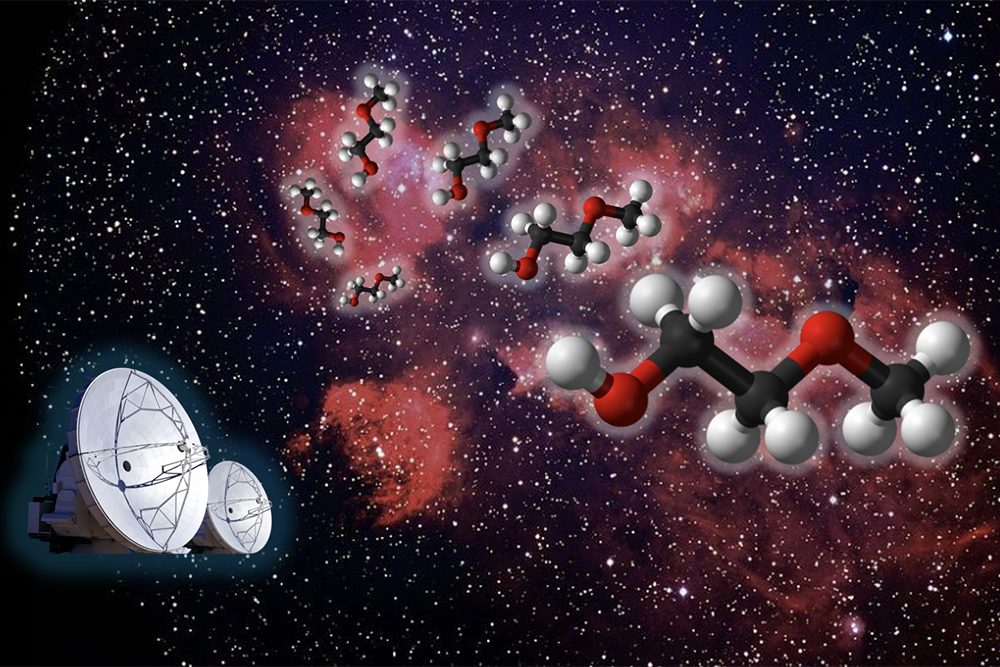In Short:
New research led by MIT Professor Brett McGuire discovered a new molecule, 2-methoxyethanol, in space using telescopes. Graduate student Zachary T.P. Fried assembled a global team to analyze the spectrum of this molecule on Earth and then search for it in space. This discovery helps researchers understand the formation of molecules in space during the creation of stars and planets.
New research conducted by the group of MIT Professor Brett McGuire has uncovered the existence of a previously unknown molecule in space. The team’s open-access paper, “Rotational Spectrum and First Interstellar Detection of 2-Methoxyethanol Using ALMA Observations of NGC 6334I,” is featured in the April 12 issue of The Astrophysical Journal Letters.
Discovering a New Molecule
Zachary T.P. Fried, a graduate student in the McGuire group, served as the lead author of the publication. He collaborated with researchers from various locations like France, Florida, Virginia, and Copenhagen to piece together this discovery.
According to Fried, “Our group aims to identify molecules present in regions of space where stars and solar systems are forming. This allows us to understand the evolution of chemistry during star and planet formation. By examining the rotational spectra of molecules, we can detect their unique patterns of light emission as they rotate in space, serving as molecular fingerprints. To identify new molecules in space, we first study their spectrum in the lab on Earth and then search for that signature using telescopes in space.”
Utilizing Machine Learning for Targeted Research
The McGuire Group has recently ventured into using machine learning to recommend target molecules for study. In 2023, a machine learning model suggested focusing on a molecule called 2-methoxyethanol.
“2-methoxyethanol is among many ‘methoxy’ molecules present in space, but it is the largest and most complex to be discovered,” explains Fried. To detect this molecule using radiotelescope observations, the group conducted experiments across different locations to analyze its rotational spectrum within a broad frequency range. The data gathered from these measurements enabled the search for the molecule using ALMA observations towards NGC 6334I and IRAS 16293-2422B.
“By observing 25 rotational lines of 2-methoxyethanol, we confirmed its presence in NGC 6334I, allowing us to derive important physical parameters and investigate potential formation pathways from known interstellar precursors,” says Fried.
Implications and Future Research
Discoveries like this help researchers better understand the complexity of molecules during star formation processes. The detection of 2-methoxyethanol, with its 13 atoms, expands our knowledge of large interstellar molecules. Fried emphasizes that further observations of large molecules will enhance our understanding of their formation mechanisms and how varying physical conditions can impact interstellar chemistry.





